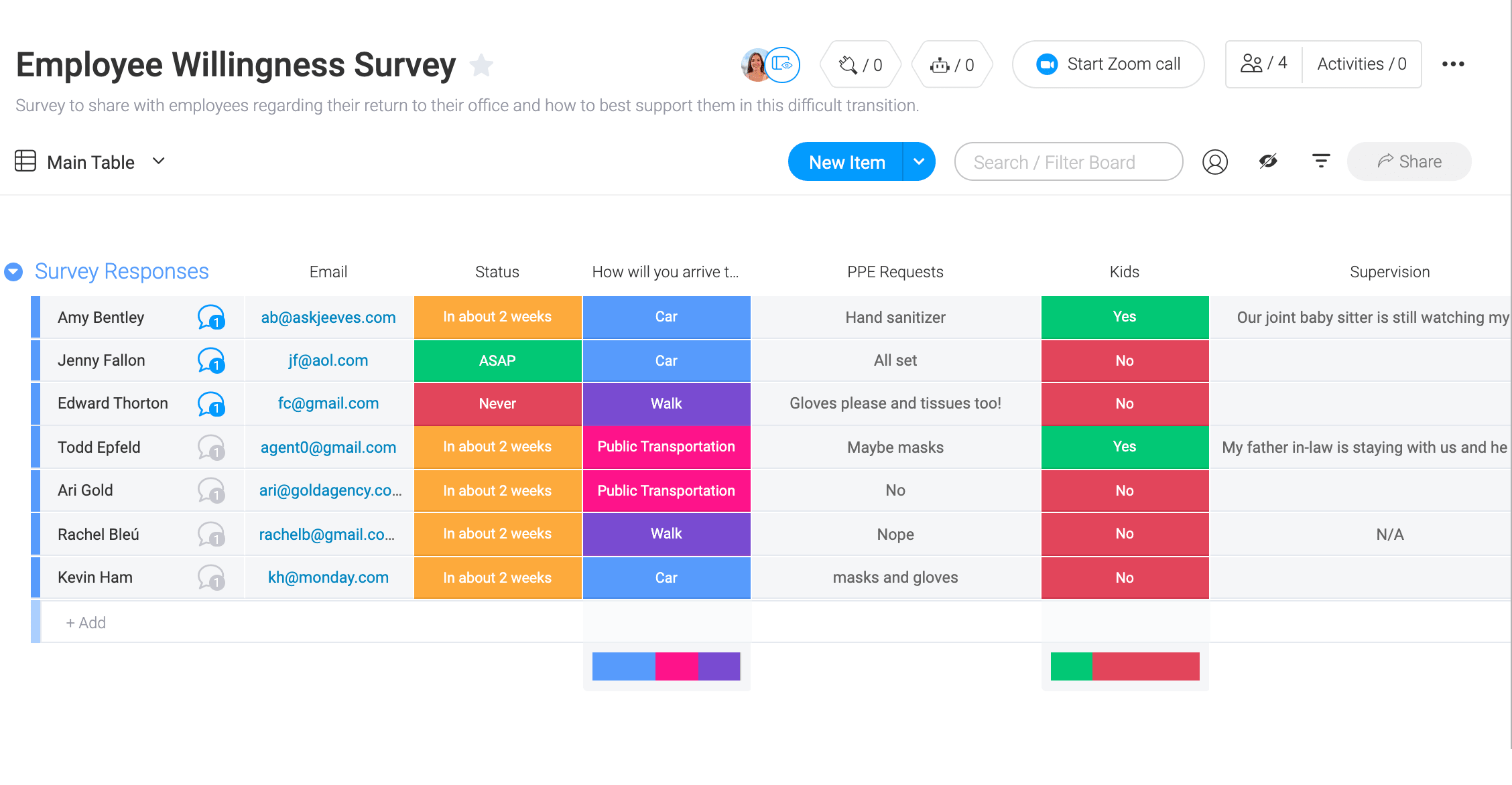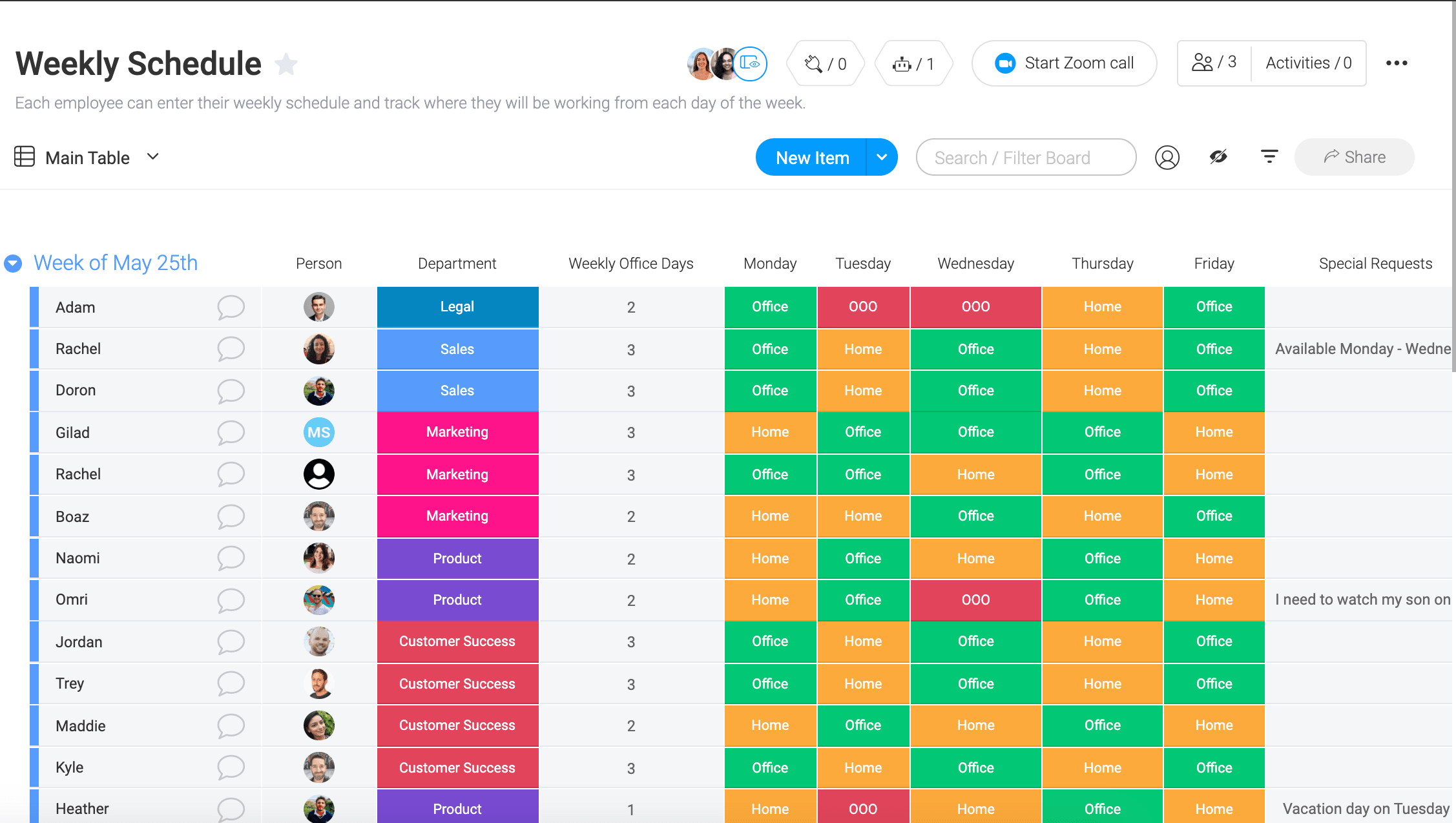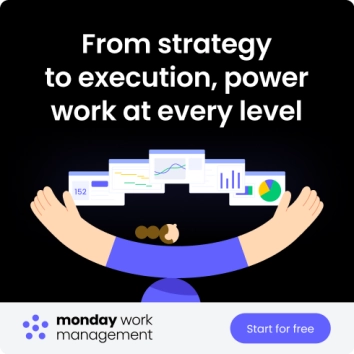Mismanaging a project is a great way to lose money, waste time, and demotivate your team. Without a clear roadmap, even the best ideas can get lost in chaos, leading to missed deadlines and budget overruns. The key to avoiding this is a standardized project management process.
A comprehensive project management process acts as a guide for your team, keeping everyone aligned and productive from start to finish. It’s all about systemizing how you plan and execute any new project, ensuring every step is deliberate and effective.
In this article, we’ll walk you through the 5 essential phases of a project management process that actually works. We’ll also show you how a Work OS like monday.com can help you implement each phase seamlessly.
TL;DR: A project management process is a structured, 5-phase approach (Initiation, Planning, Execution, Monitoring, and Closure) that guides projects from idea to completion, ensuring teams stay aligned, on budget, and on schedule.
What is a project management process?
What is a project management process?
A project management process is a series of sequential phases that guide a project from its initial concept to its final delivery. Think of it as the project’s lifecycle. This structured approach ensures that projects are planned, executed, monitored, and completed in an organized and efficient manner.
This entire sequence is often called the project management life cycle. Each phase has its own set of tasks, goals, and deliverables, which helps break down a large project into smaller, more manageable stages. By following a defined process, teams can maintain control, manage resources effectively, and increase the likelihood of achieving the project’s objectives.
Why a standardized project management process is crucial for success
Why a standardized project management process is crucial for success
Jumping into a project without a standardized process is like trying to build a house without a blueprint. You might get a structure up, but it’s unlikely to be stable, on-time, or within budget. A standardized process provides the framework everyone on the team needs to succeed.
Here’s why it’s so important:
- Clarity and alignment: Everyone knows what needs to be done, who is responsible, and when it’s due. This eliminates confusion and ensures the entire team is working toward the same goals.
- Improved efficiency: By defining steps and automating repetitive tasks, you reduce wasted effort and help your team focus on high-impact work.
- Better risk management: A formal process includes stages for identifying and planning for potential risks before they become major problems.
- Greater visibility: Stakeholders and managers get a clear view of project progress, which helps in making informed decisions and managing expectations.
- Consistent results: When you follow a proven process, you’re more likely to deliver high-quality results consistently across all your projects.
The 5 phases of the project management process
The 5 phases of the project management process
According to the Project Management Body of Knowledge (PMBOK), all project management processes fall under an umbrella of 5 main phases or process groups. Let’s break down each one.
Phase 1: Project initiation
Phase 1: Project initiation
The initiation phase is where a project is formally defined and authorized. Before you commit to a new project, your team will develop a project charter or business case. This document outlines the project’s purpose, goals, scope, stakeholders, and potential risks. It’s the foundational step to get buy-in from management and secure the necessary resources.
During this phase, it’s also critical to perform a stakeholder analysis to identify everyone who will be affected by the project and understand their expectations. If this stage drags on, it can take weeks, so many teams whittle it down to a single meeting to quickly evaluate whether to pursue a project.
How monday.com streamlines project initiation
With monday.com, you can use customizable Forms to standardize project requests, ensuring you get all the necessary information from the start. You can then use a template to quickly build a project charter in monday workdocs, collaborating with your team in real-time to get everyone aligned and approved faster.
Start your next project right. to define your goals and get stakeholder buy-in.
Phase 2: Project planning
Phase 2: Project planning
Once a project is approved, it’s time for detailed planning. This is arguably the most critical phase, as it lays the groundwork for the entire project. A lack of planning is a major reason why many projects fail to meet their goals or exceed their budget.

Before executing a project, be sure you’ve developed a step-by-step work plan that considers all relevant factors, including:
- Scope and deliverables: Clearly define what the project will and will not include.
- Tasks and activities: Break down each deliverable into the necessary tasks and sub-items.
- Timeline: Estimate a realistic timeline, figure out dependencies, and set milestones. A Gantt chart is a great tool for this.
- Budget and resources: Determine the budget and allocate the necessary resources, including your project team.
- Communication plan: Decide how and when you’ll communicate with stakeholders.
- Risk management: Identify potential risks and create a plan to mitigate them.

How monday.com simplifies project planning
monday.com offers powerful features to make planning easier. You can use our Work Plan template to get started quickly. Visualize your entire project timeline with the Gantt view, manage dependencies automatically, and use the Workload widget to ensure tasks are distributed evenly across your team. All your planning documents, timelines, and budgets can live in one central place.
Build a flawless project plan. .
Phase 3: Project execution
Phase 3: Project execution
The execution phase is where the plan is put into action. The project team gets to work on the tasks and activities outlined in the project plan to produce the deliverables. This phase is all about managing teams, communicating with stakeholders, and ensuring the work is getting done correctly and on time.
Planning is important, but it doesn’t matter if you slip up in the execution phase. According to the Project Management Institute, poor project performance can waste up to 11.4% of an organization’s investment. To stay on course, it’s crucial to assign clear ownership of tasks, set small goals, and maintain a culture of productivity with regular progress meetings or check-ins.
How monday.com powers project execution
During execution, monday.com keeps your team connected and on track. You can assign tasks to team members, set deadlines, and attach all necessary files and context directly to each item. Automations handle repetitive work, like notifying a team member when a task is ready for review or moving an item to the next stage. Integrations with tools like Slack, Gmail, and Microsoft Teams mean all communication stays connected to your work.
Phase 4: Project monitoring and controlling
Phase 4: Project monitoring and controlling
The monitoring and controlling phase runs simultaneously with the execution phase. It involves tracking project progress, managing changes, and ensuring that the project stays on schedule and within budget. This is where you measure performance against the project plan and identify any deviations or potential issues, like scope creep.
To do this effectively, you need a better way to track progress than just major milestones. A workflow where you track tasks and key performance indicators (KPIs) in real-time will give managers a much better overview of the project. For projects with hard deadlines and expenses, a Work Breakdown Structure (WBS) board can be a good idea.

How monday.com provides real-time project monitoring
monday.com makes monitoring effortless with customizable Dashboards. You can build high-level dashboards with over 10 widgets to track KPIs, budgets, timelines, and more in real-time. Get instant status updates without having to chase down your team, and make data-driven decisions to keep your project on the path to success.
Stop chasing status updates. to track progress and KPIs at a glance.
Phase 5: Project closure
Phase 5: Project closure
The final phase of the project management process is closure. This is where the project is formally closed out, deliverables are handed over to the client or stakeholders, and the team is released. It’s also a critical time for reflection and learning.
You should evaluate the overall performance of the project. Did you follow the project plan? Did you meet the deadlines and stay within budget? You should also analyze the contributions of individual team members and document lessons learned. This information is invaluable for improving processes on future projects.
How monday.com helps with project closure
With monday.com, you can easily generate final reports from your dashboards to share with stakeholders. Use a monday workdoc to create a project post-mortem, capturing what went well and what could be improved. Once everything is complete, you can archive your project boards, keeping all the historical data accessible for future reference.
Choose the right methodology for your process
The 5-phase model provides the ‘what,’ but a project management methodology provides the ‘how.’ There’s no one-size-fits-all option, so you need to choose the project management methodology that best lines up with the scope and goals of your project.
For example, if you’re developing a new product with a large budget and team, a traditional, sequential methodology like Waterfall (which aligns closely with the PMBOK model) might make sense. It’s all about quality control and taking each step forward securely.

On the other hand, if you’re working closely with customers to improve an existing product, you want something faster and more dynamic. An Agile approach, with its focus on feedback loops and adapting on the fly, is more suitable. With Agile, your plan may only extend to immediate goals listed in a specific Sprint backlog, with other tasks relegated to the general product backlog.
Build a better process with monday.com
Build a better process with monday.com
Jumping into project management without a clear process can easily backfire. By implementing the 5 phases of the project management process, you create a roadmap that guides your team forward instead of slowing it down.
Ready to build a process that works? With monday.com, you can manage every phase of your project lifecycle on one flexible platform.

